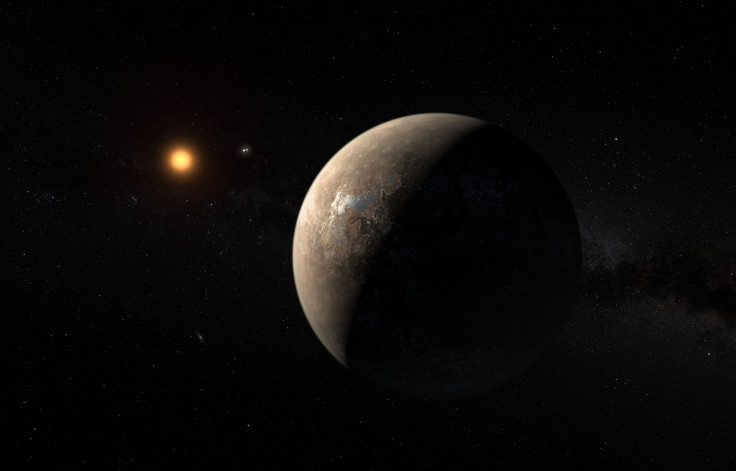Could exoplanet Proxima b be covered by a 'large ocean'?
Simulations of the exoplanet's composition and radius show that it might harbour a large ocean.

Proxima b, the closest exoplanet to Earth ever discovered, may be covered by a large ocean. This new finding consolidates its status as the prime target in the search for life outside the solar system.
It was a historic discovery just over six weeks ago, on 24 August, when an international team of scientists announced that they had found clear evidence of a new planet in orbit within the habitable zone of Proxima Centauri – the closest star to our Sun.
Astronomy enthusiasts around the world were thrilled by the news, especially since the exoplanet's location makes it possible for it to have water on its surface, and thus potentially some form of life.
However, we won't encounter Proxima B's possible inhabitants anytime soon. Much more remains to be discovered about the exoplanet.
In a study which will soon be published in The Astrophysical Journal Letters, a team of scientists from France's Centre national de la recherche scientifique (CNRS) has determined Proxima b's dimensions and planetary surface properties. Their different measurements indicate it has the potential to be an "ocean planet".
Mysterious planet radius
To date, scientists have been able to infer that Proxima b is a rocky world with a mass about 1.3 times that of the Earth, orbiting its star every 11 days at a distance of seven million kilometres. Despite being very close to Proxima Centauri, the planet receives only about 65% of the energy that the Earth receives from the sun.
However, one crucial detail is missing with regard to the planet's size and exactly what materials it is composed of. Its radius is not yet known. In their research, the team used data about Proxima b's mass to estimate different possible measures of its radius depending on simulations of the planet's composition. Each estimate produced a different radius.
The scientists estimate the radius to be between 0.94 and 1.40 times that of Earth. Its minimum possible radius is 5990 km, a measure that is possible only if the planet is very dense, with a metallic core making up two-thirds of its entire mass, surrounded by a rocky mantle.
This does not exclude the presence of water, and the researchers estimate that the exoplanet's dimensions make the presence of surface water possible. However, it would not contribute more than 0.05 percent to the planet's total mass - similar to Earth, where it is about 0.02 percent.
The scientists have also estimated that Proxima b's maximum radius would measure 8,920 km and in this scenario, its mass would be split 50-50 between a rocky centre and surrounding water. In this case, Proxima b would be covered by a single, liquid ocean 200 km in depth.
"In both cases, a thin, gassy atmosphere could surround the planet, like on Earth, rendering Proxima b potentially habitable," the CNRS scientists conclude.
© Copyright IBTimes 2024. All rights reserved.







